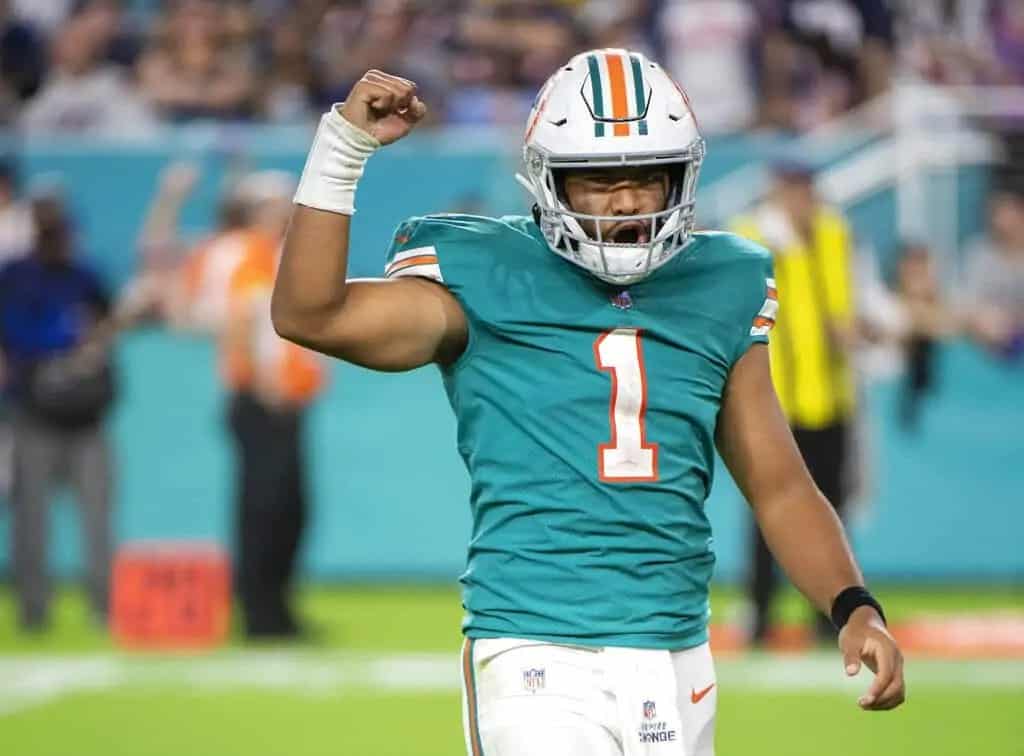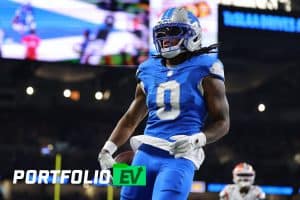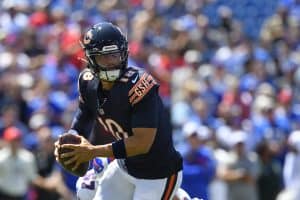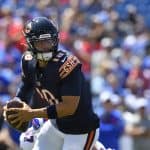The most profitable football bettors have both a broad understanding of statistics and the wisdom to know which numbers matter most. In this installment of our NFL football sports betting and strategy guide, I’ll dive into the specifics of net yards per attempt. If you want to zoom out and get a bigger-picture view, check out the first installment! As always, if you don’t want to do the dirty work yourself, subscribe to OddsShopper Insider Access and check out my NFL betting model. Let’s dig in!
NFL Football Betting & Strategy Guide: What are Net Yards Per Attempt (NY/A)?

👉 Check Out the FREE Expert Picks »
The Free Picks on Tails are your shortcuts to smarter bets … no signup, no strings. Here you will find a bunch of FREE expert picks, updated daily.
NFL Football Betting & Strategy Guide Part 3. Net Yards Per Attempt
So what are net yards per attempt (NY/A), and why should you care about them? I advise that you think about this statistic, and its sibling statistic, adjusted net yards per attempt (ANY/A), as a gauge of both an offense and a quarterback.
The metrics measure the number of yards a quarterback has gained through the air, minus any yards lost via sacks, divided by their total number of passing attempts and sacks. ANY/A also rewards quarterbacks for passing touchdowns while punishing them for interceptions. Their formulae are relatively self-explanatory:
NY/A = (Passing Yards – Sack Yards) / (Passing Attempts + Sacks Taken)
ANY/A = ((Passing Yards – Sack Yards) + (20 * Passing Touchdowns) – (45 * Interceptions)) / (Passing Attempts + Sacks Taken)
Treating NY/A and ANY/A as purely a quarterback statistic is misguided. While some quarterbacks are to blame for the sacks they take, this isn’t always the case. Quarterbacks shouldn’t be punished for poor offensive line play.
Likewise, should you credit quarterbacks for the yards their receivers generate after the catch? This metric doesn’t differentiate between a 50-yard hail mary and an 11-yard slant if the players who catch them rack up the same number of yards.
All of that said, teams that gain more net yards usually score more points, and teams that score more points tend to win more games. Digging into a quarterback’s NY/A and ANY/A can help you identify whether a team’s success — or a lack thereof — is sustainable.
The metrics can serve as a useful gauge for individual quarterbacks if you don’t look too closely — a quarterback who records 7.49 NY/A is likely a much higher-value asset than one who records 4.32 NY/A, regardless of the supporting cast. Further, NY/A and ANY/A are great metrics for comparing two quarterbacks on the same team.
Using NY/A: Case Study | Football Betting & Strategy Guide
Let’s look at the quarterbacks who fared best and worst in both NY/A and ANY/A during the 2022 regular season. We’ll do so with an eye to their subsequent performance in the playoffs — if NY/A and ANY/A are meaningful stats, quarterbacks that fared well in the metric should’ve gone on deeper runs, while those who didn’t should’ve suffered early exits.
The six quarterbacks who led in NY/A in 2022 included Tua Tagovailoa (8.04), Patrick Mahomes (7.51), Jimmy Garoppolo (7.17), Jared Goff (7.02), Jalen Hurts (6.97) and Josh Allen (6.87). Aside from Goff, each started for teams that made the playoffs. None played for teams that recorded losing records. The top six remained the same for ANY/A, although Joe Burrow moves from ninth in NY/A (6.52) to seventh in ANY/A (6.76).
Notably, the two quarterbacks who made it to the Super Bowl, Mahomes and Hurts, wound up in the top six in NY/A. The Super Bowl quarterbacks the year before, Matthew Stafford (7.36) and Joe Burrow (7.43), both were top three in NY/A. The last team to make a Super Bowl despite its starting quarterback ranking outside the top 12 in regular-season NY/A: the 2015 Denver Broncos with Peyton Manning (6.21) at the helm.
Each of the three top-six quarterbacks in NY/A to start a playoff game — Mahomes, Hurts and Allen — won at least once. The trio recorded a combined playoff record of 6-2. These teams dispatched teams led by worse performers in the metric like Burrow (6.52), Trevor Lawrence (6.43) and Daniel Jones (5.74), who themselves helped dispatch other stragglers like Justin Herbert (6.15) and Kirk Cousins (6.12).
Unsurprisingly, quarterbacks and teams that fare poorly in NY/A also fare poorly in the standings. The six eligible quarterbacks at the bottom of the NY/A rankings in 2022 were Justin Fields (5.05), Kyler Murray (5.24), Baker Mayfield (5.25), Carson Wentz (5.28), Kenny Pickett (5.34) and Matt Ryan (5.55). This list includes the starting quarterbacks for three of the worst four teams by winning percentage. Half of them were benched and have since been traded or released.

Start building your bankroll and securing long-term profits with Portfolio EV. Take advantage of our FREE TRIAL to unlock more +EV bets — visit our Portfolio Betting page to begin your journey!
Using NY/A to Evaluate Offenses & Quarterbacks | Football Betting & Strategy Guide
Although they aren’t quite as effective as EPA per play, NY/A and ANY/A are both useful tools in NFL betting and football betting writ large. However, unlike EPA per play, both metrics are relatively easy to calculate by using data from box scores. This can make them exceptionally helpful when handicapping spring football leagues.
It’s generally sharp to trust the team with the better quarterback in NY/A or ANY/A — at least outright. As last year’s playoff results showed, it’s difficult for an offense led by a quarterback who fares poorly in either NY/A or ANY/A to outscore one led by a quarterback who fares well in the metrics. Sharp bettors faded the Minnesota Vikings down the stretch — and subsequently turned a profit — because their offensive inefficiencies were rendered obvious by these metrics and others.
Aside from helping us identify overrated and underrated teams, NY/A and ANY/A can help us identify offenses that are more or less likely to put points on the board. Five of the six teams with a top-six quarterback in NY/A were also top six in points per game. Three of the six teams with a bottom-six quarterback in the metric were also bottom six in points per game. Although NFL totals markets are incredibly inefficient, so those performances didn’t correspond to an edge on overs or unders, getting ahead of the books by digging into NY/A and ANY/A early in a season can give you an edge.
Index
Part 1. NFL & College Football Betting & Strategy Guide: Offense
Part 2. Expected Points Added (EPA)
Part 3. Net Yards Per Attempt (NY/A)
Part 4. Passing Efficiency
Part 5. NFL & College Football Betting & Strategy Guide: Defense




























